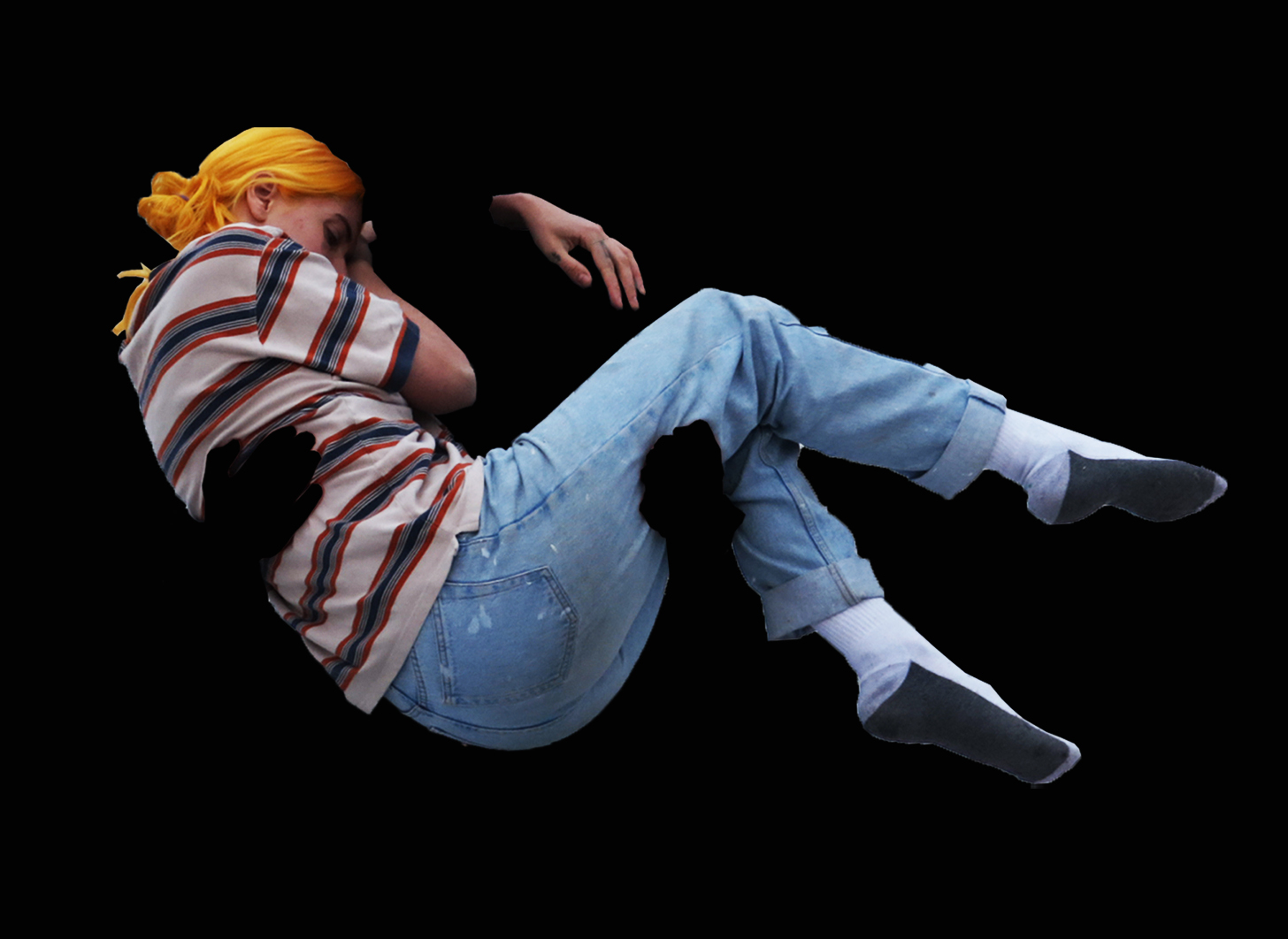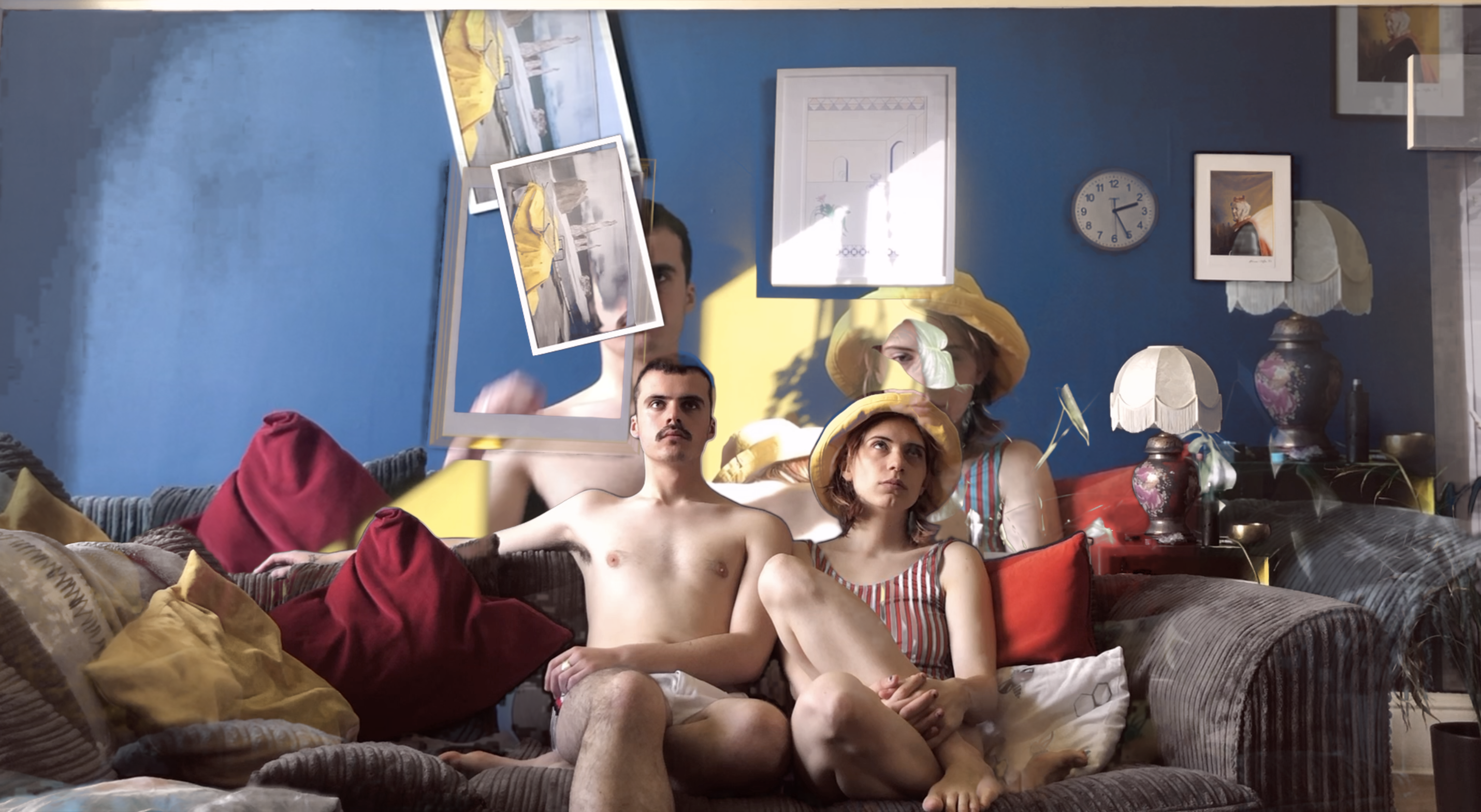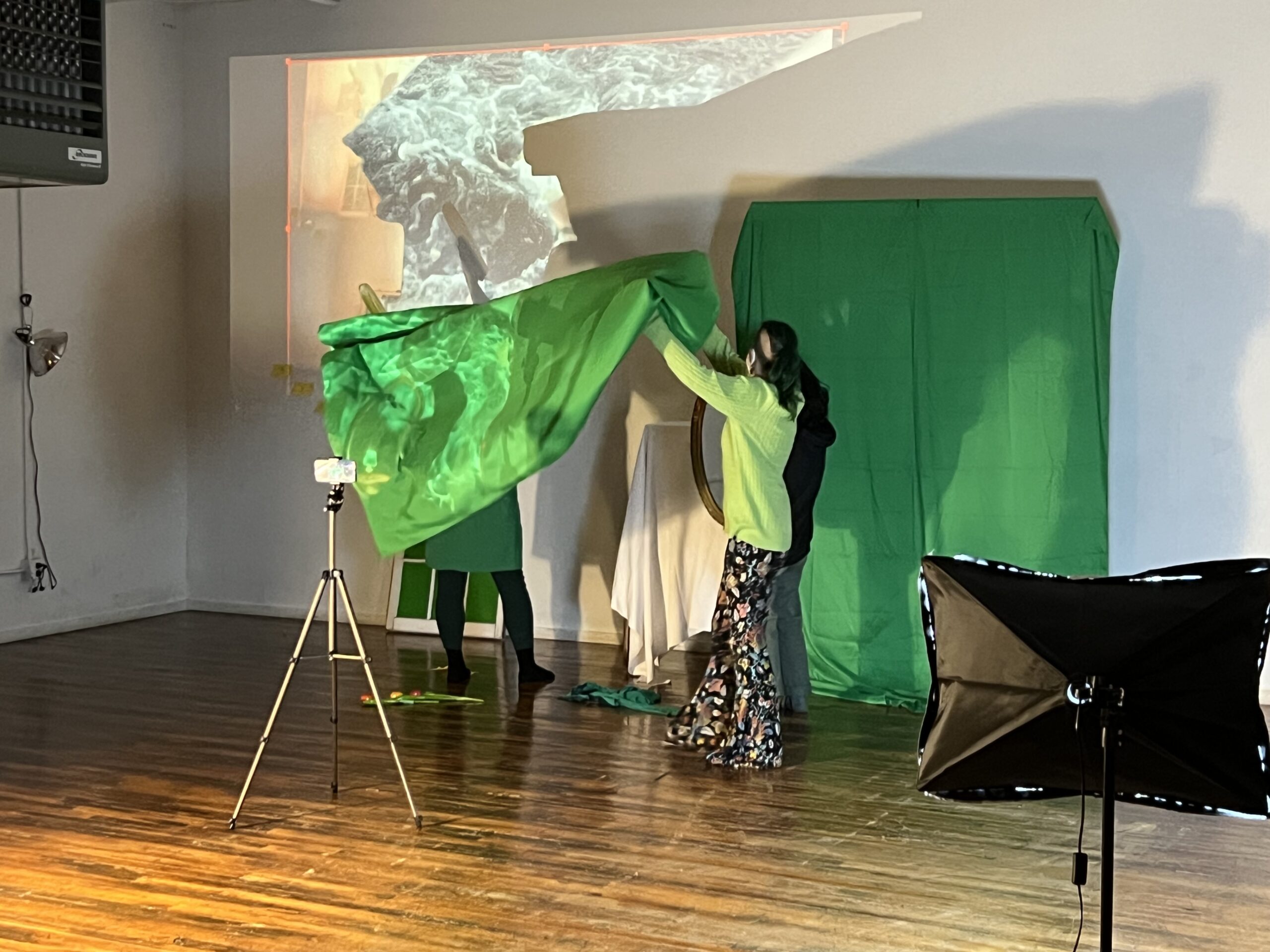Object Opens Object: Refracting on Chroma Key
How green screen technology remakes not only images and perception, but the function and ontology of objects themselves





Chroma: color
Key: code that unlocks a system OR object that opens another object.
The color green is read by the application as information. Green becomes a communication that that space is to be redacted, to let another image through. All green becomes empty space. Empty space lets through what is underneath. Formal components of aesthetics–light, shape, hue, etc.–all become information. The images literally are information not just for our artistic reading, but for technological transcription. Chroma key technology (i.e., green screen) is not interested in making a compelling image, it is interested in the coding of formal components of aesthetics. Everything we see becomes communication.
Figure 1. Turf grass in the middle of winter
sometimes its hard to perform, to be present. i just want to mediate it in some way that makes it not so intense. i find it quite intense honestly. but i don’t mind just being here and moving around, making these images happen. hide a little bit, don’t be myself too much. haha. hi.
Figure 2. Milk being poured out of thin air
Something happened to—. A dent in a wall is an imprint of a shoe, a cut on a knee is the shape of a sidewalk, an inhabited mannerism is still your mannerism even when you decided to stop talking to that person. These are all actions, enactments of things on things. All of these things are now changed, ontologically different than they were before the other thing appeared, now holding the presence of something that isn’t present anymore. Shoes and sidewalks and lovers keep on being here even when they’re not.
Figure 3. Gazing into someone’s eyes through both your glasses and theirs
Sometimes I would lay in bed and actually feel seasick, hearing the waves in my head from hours of editing, thinking of the four walls only as an empty space for something else to fill. Like the moon changes the tide from a million miles away, and the tide changes the sand, and the color of the atmosphere makes the mountains look blue from a distance, I started to view place not as a stagnant thing, but a form to hold everything else. Sometimes it felt haunted, a reference to everything far away.
Figure 4. An opaque window with green painted panels
In Graham Harman’s Tool-Being, he talks about the “withdrawn” object. These are objects that are not directly present, but can be seen through other objects– think: a tree, in the summer, 8 pm. The sun backlights the foliage so that you can see all the leaves through the other leaves, flickering as shadows, sharp cut outlines. Dense areas keep more darkness, while sometimes the sun slips through entire gaps. These hundreds of separate objects (what we would call tool-beings) somehow create one singular image (a perfectly functioning machine), which includes all of their components, but never explicitly makes any one of them visible. When an object performs its function well enough, it disappears from view. So, for example, instead of encountering a “pane of glass” we tend to make use of this item indirectly, in the form of “well-lit room”, or “view to the outside.”
Figure 5. A meme of a meme of a meme
at work the other day, my co-worker was just like cleaning this metal circle? and i was like what the fuck is that? what the hell is she cleaning? i literally couldn’t recognize what it was that she was holding. i literally scanned my whole brain and drew a blank. what the actual fuck was this unidentified, meaningless object? and then i was like oh! it’s the rim of the garbage bin. i threw things into it obviously every day, but i guess i’d never really seen it before.
Figure 6. A bowl sitting on an invisible table
My ex gas lit me like I was a little empty green screen and he was controlling the input. I became codependent with him because he would argue against every feeling I expressed until I ended up agreeing with him on something that wasn’t even his to begin with. He made parts of me disappear, he made me blur into the background of his image. He is an heir to a construction company that his dad owns, and his dad before that and his dad before that. He would always talk about how men create the architecture of cities, and therefore create the shapes of the world for other people to move within: outlines, algorithms, codes, empty spaces. He always said this like he was fascinated about how sadistic it was.
Figure 7. An arm protruding out of a stomach
This is a world made of poor images, where the pixilated image has become more real than the original image. It is simulacra, where the starting point has completely disappeared from view and we are left with fragments of things that have no clear process, that we can’t even trace back to the ink band or the metal keys. Chroma key is a deconstruction, where floating, untethered objects are made.
Figure 8. The shadow of a hand behind a curtain, seen through your rearview mirror
Technology itself is a withdrawn object, functioning so seamlessly that it becomes only a quality of other things. What if it were put center stage? What if the image was being made from within the image? What does a camera look like when its filming? Can the process become demystified? Or does the withdrawn image only ever withdraw further into itself? Can both happen at the same time?
Figure 9. A face squished beneath a green morphsuit
I accidentally ended up living in a Q-Anon community, and they always told me that Hillary Clinton was a hologram. They cited a video on YouTube where she is giving a press talk and she disappears momentarily before she reappears. Late one night, while smoking a cigarette on the front steps, one of the women said to me that she cried herself to sleep every night since the pandemic started–she couldn’t believe that this was the reality in which her kids had to grow up–“…and then, I realized, it wasn’t!”
Figure 10. Calling for your dog who you forgot is dead
It’s the separation of references from reference, signified from signifier. I go into the grocery store and look at the wall of meat. All these cuts, dismembered. Cow becomes steak and entirely not cow. I am completely removed from the process. I wasn’t involved in any of the steps necessary to now have this piece of meat in front of me. But I can grab it and put it in my shopping basket and go home and it’s all entirely boring. That’s Fordism. That’s amnesia. That’s complacency. I want performance to be like I’m forcing you to go out in the damn field with me and shoot the fucking cow. I want you to be shaking while you hold the shotgun.
Figure 11. The picture of a throughway hung in front of a dead end
It is a practice in arranging things, but arranging things within and through each other–a depiction of where and how objects resonate, refract, reflect, emerge. Aesthetic resonance deals with not just the relation between objects, but between the objects and ourselves, how they ‘reverberate the mind’. This implies that aesthetic arrangements also include our subjectivity, mentality, and identity in their construction.
Figure 12. A room within a room within a room
sydney said it’s like, in love, you can really grow to love the part of you that is knowable to someone else, or, well, seen. and you, just drinking your coffee in the morning la la la, fiddling with your hair la la la, is just suddenly, perceived.
Figure 13. A sexy, pierced belly button (the dead nub of an umbilical chord)
Technology is so (re)active to input that it garners its own sense of liveness. As I move, it moves. As shadows pass, things appear or disappear completely. Pixels flicker between colors of absent objects–muddled browns and grays that haven’t quite picked up the green. Edges are frayed and redrawn in relation not to the mass of an object, but to the way that light defines it. People begin to understand the system of image making: they begin to use the objects that they are holding and touching only as tools to trigger particular reactions of the chroma key. For example, holding a vase up in such a way that the image of half-a-vase appears inside it and the shadow of a vase behind it, blurring into one thing. The technology of chroma key reiterates objects into new objects. Real objects become redundant, and the reaction of objects upon other objects moves to the forefront of our interactions creating new ontology. Like the poor image, these new objects seem to take precedent over the original ones.
Figure 14. Rubbery wine
All the bananas died. Now all the bananas are fake. Technically, transphobes shouldn’t be eating bananas. They shouldn’t be using green screen either. God let me lie so I don’t mind–OR–it’s not lying, its expression. Natural is obsolete.
Figure 15. A riptide
have you ever looked at the hinges on your front door? or your ceiling light where it attaches to the ceiling? i bet you haven’t. unless it broke and you had to go get up on a ladder to fix it. but if you looked at the lightbulb for too long you might have been blinded and not been able to see it anyways. have you ever looked at the sun? well you shouldn’t. It doesn’t really look like much anyways, except for when it catches in other things, like the clouds at sunset or whatever. then you can look at it without really looking at it so that you don’t get it burnt onto your eyes, that little ghost of a sun that bounces around in front of everything else.